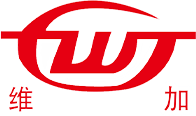- Afrikaans
- Albanian
- Amharic
- Arabic
- Armenian
- Azerbaijani
- Basque
- Belarusian
- Bengali
- Bosnian
- Bulgarian
- Catalan
- Cebuano
- Corsican
- Croatian
- Czech
- Danish
- Dutch
- English
- Esperanto
- Estonian
- Finnish
- French
- Frisian
- Galician
- Georgian
- German
- Greek
- Gujarati
- Haitian Creole
- hausa
- hawaiian
- Hebrew
- Hindi
- Miao
- Hungarian
- Icelandic
- igbo
- Indonesian
- irish
- Italian
- Japanese
- Javanese
- Kannada
- kazakh
- Khmer
- Rwandese
- Korean
- Kurdish
- Kyrgyz
- Lao
- Latin
- Latvian
- Lithuanian
- Luxembourgish
- Macedonian
- Malgashi
- Malay
- Malayalam
- Maltese
- Maori
- Marathi
- Mongolian
- Myanmar
- Nepali
- Norwegian
- Norwegian
- Occitan
- Pashto
- Persian
- Polish
- Portuguese
- Punjabi
- Romanian
- Russian
- Samoan
- Scottish Gaelic
- Serbian
- Sesotho
- Shona
- Sindhi
- Sinhala
- Slovak
- Slovenian
- Somali
- Spanish
- Sundanese
- Swahili
- Swedish
- Tagalog
- Tajik
- Tamil
- Tatar
- Telugu
- Thai
- Turkish
- Turkmen
- Ukrainian
- Urdu
- Uighur
- Uzbek
- Vietnamese
- Welsh
- Bantu
- Yiddish
- Yoruba
- Zulu
Seamless Tubing Connectors for Efficient Fluid Transfer Applications
Seamless Tubing Coupling A Comprehensive Overview
In the realm of modern engineering and manufacturing, seamless tubing and its various coupling mechanisms play a pivotal role across a multitude of industries, including oil and gas, aerospace, automotive, and construction. The seamless tubing coupling is a specialized component that ensures the effective and efficient connection of seamless tubes, enhancing their performance and longevity.
Understanding Seamless Tubing
Seamless tubing is manufactured through a process that involves piercing a solid cylindrical billet of metal, followed by elongation through a series of die stages. Unlike welded tubing, seamless tubing has no longitudinal seams, which provides several advantages. It boasts superior strength and reliability due to its uniform structure. The absence of welds means that there are no weak points that could lead to failure under pressure. This characteristic makes seamless tubing especially suitable for high-pressure applications, where even minor defects can lead to catastrophic results.
The Importance of Couplings
Couplings are critical components that facilitate the connection of two or more lengths of tubing. They are available in various configurations and materials, tailored to meet specific application requirements. In seamless tubing applications, couplings must be robust and capable of maintaining the integrity of the tubing's seamless design. The performance of the coupling directly influences the overall performance of the system, particularly concerning pressure resistance, flow dynamics, and safety.
Types of Seamless Tubing Couplings
1. Mechanical Couplings These couplings rely on mechanical means, such as clamps or flanges, to connect seamless tubes. They allow for disassembly and reassembly, providing flexibility in maintenance and installation.
2. Welded Couplings While typically associated with welded tubing, certain applications use welded couplings with seamless pipes. These provide a strong, permanent joint but can complicate maintenance.
seamless tubing coupling

3. Threaded Couplings Common in piping systems, threaded couplings offer ease of assembly and disassembly. They are not as commonly used with seamless tubing, but when employed, ensuring proper alignment and overcoming potential leak areas is vital.
4. Flanged Couplings Flanges create a large surface area for connection and are often utilized when access for maintenance or system expansion is needed. They can accommodate thermal expansion, which is especially important in high-temperature applications.
Materials Used for Seamless Tubing Couplings
The choice of material for seamless tubing couplings is crucial for their performance and longevity. Common materials include carbon steel, stainless steel, and alloy steel. The selection depends on the operational environment, pressure requirements, and potential exposure to corrosive elements. For example, stainless steel couplings are ideal for applications in corrosive environments due to their resistance to rust and oxidation.
The Application Spectrum
Seamless tubing and its couplings find extensive applications in industries where safety and reliability are paramount. In the oil and gas sector, they are utilized in drilling equipment and pipelines, where high pressure and potential corrosive fluids necessitate robust solutions. Aerospace engineering employs seamless tubing in critical flight systems, where weight reduction and structural integrity are vital. Additionally, seamless tubing couplings contribute to the effectiveness of hydraulic systems in automotive and industrial machinery.
Conclusion
The seamless tubing coupling is a testament to engineering innovation, combining the strength and resilience of seamless tubing with the versatility of various coupling designs. As industries continue to demand higher performance, reliability, and efficiency, the advancement of seamless tubing and its couplings will play an essential role in their evolution. Understanding their characteristics, advantages, and applications can aid engineers and manufacturers in making informed choices to optimize system performance and ensure safety in their operations.
-
Tubing Pup Joints: Essential Components for Oil and Gas OperationsNewsJul.10,2025
-
Pup Joints: Essential Components for Reliable Drilling OperationsNewsJul.10,2025
-
Pipe Couplings: Connecting Your World EfficientlyNewsJul.10,2025
-
Mastering Oilfield Operations with Quality Tubing and CasingNewsJul.10,2025
-
High-Quality Casing Couplings for Every NeedNewsJul.10,2025
-
Boost Your Drilling Efficiency with Premium Crossover Tools & Seating NipplesNewsJul.10,2025







